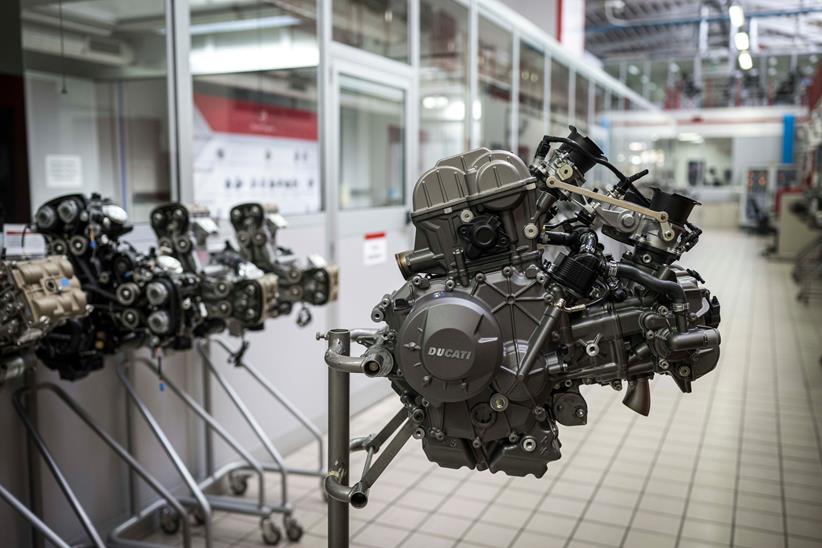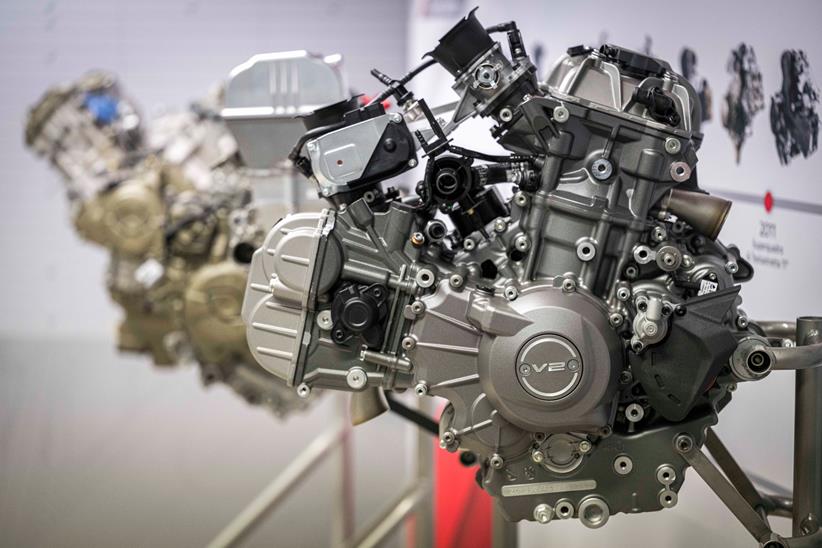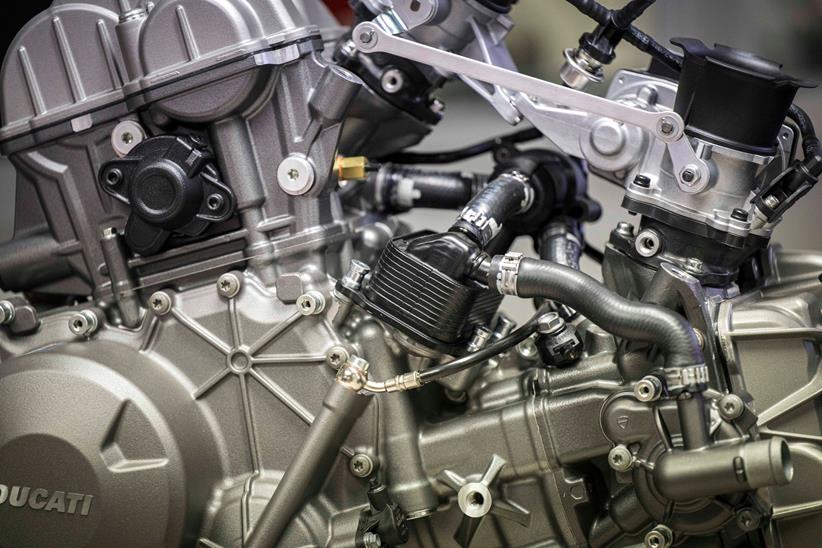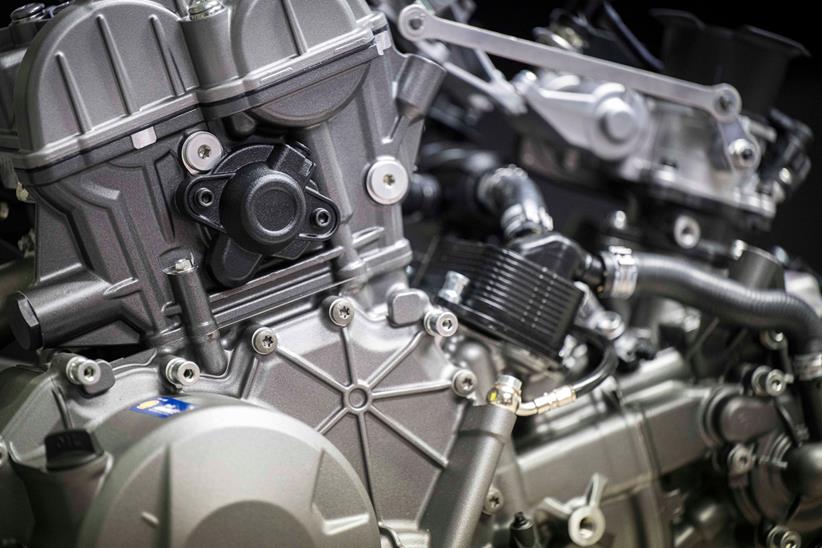V2 reimagined as Ducati's new 890cc V-twin motor is the lightest to ever leave the Bologna factory
Only a few months ago, Ducati released the news that their Superquadro twin-cylinder run would be coming to an end; a configuration that has been around in one variation or another for over 30 years.
It powered the likes of the 748, 749, 848, 899, 959 and the current Panigale V2, but it’s not the end of the road for the V-twin motor at all – more the beginning of a new one.
For 2025, Ducati will be using a new 890cc V2 motor, which will make a claimed 120hp at 10,750rpm, alongside 68.8lb.ft torque at 8250rpm. At 54.4kg it’s the lightest ‘twin to ever make its way out of the Bologna factory’s doors.
For the eagle eyed among you, you will notice that that’s 30 horsepower and 9lb.ft torque less than the previous Superquadro 955 motor in the outgoing Panigale V2, but also a 9kg weight saving.
So why have Ducati gone down a route that, at first glance, can only be conceived as a downgrade in terms of specification in everything but weight?
“This is not a superbike engine, but something different that’s built to be fun for the road,” Gianluca Zattoni, Ducati’s Head of Engine Management told us during an exclusive visit to the factory. “We’ve focused on making the new V2 light, compact and smooth, with good fuel consumption and emission numbers. Because of this, not a single part has been carried over from the previous model.”
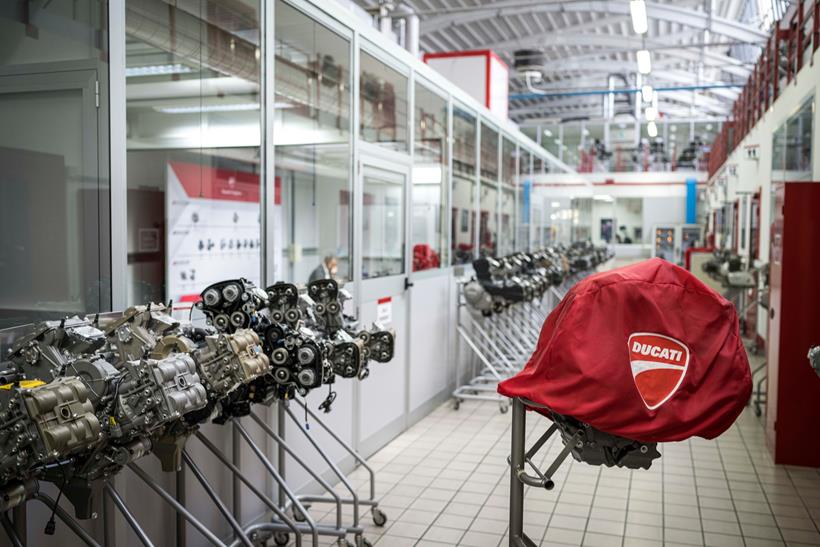
And that’s evident, when looking at the architecture of the new 90-degree V-twin. The bore and stroke ratio sits at 96mm x 61.5mm (the outgoing Superquadro is 100mm x 60.8mm) for an oversquare bore/stroke ratio, while the cylinders are rotated backwards around the crankshaft axis, for a 20-degree angle between the front cylinder and the horizontal plane in order to create a better weight balance.
There’s now an Intake Variable Timing system too for a smooth delivery of torque at the bottom end without sacrificing power at the top, which works by varying the timing of the intake valve control over a 52-degree arc.
The finger rockers also treated with Diamond-Like-Carbon (DLC), which is a special coating usually found on high-end race machinery like Ducati’s Desmosedici MotoGP machine, and the V2 will be equipped with a 52mm throttle body.
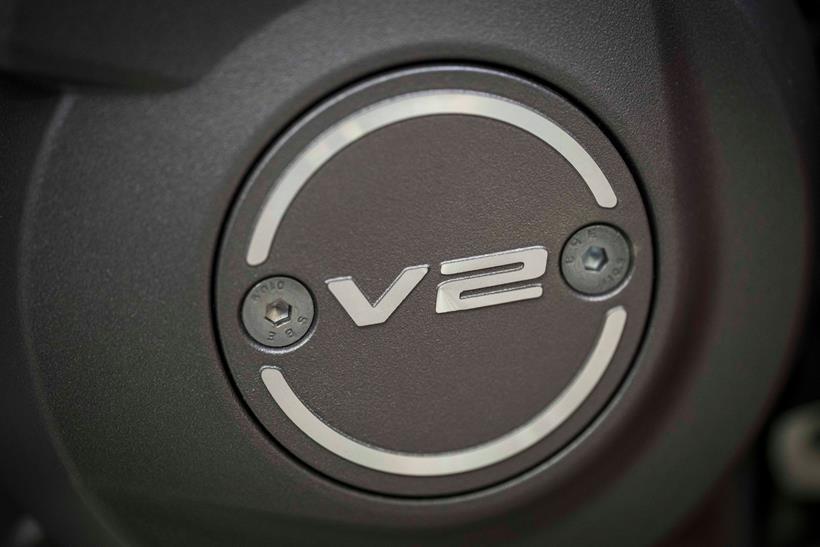
The result is a redline of 11,750rm, but more importantly, a wider operating window where torque is concerned. Ducati claim that the new V2 will make over 70% of its torque from 3000rpm, and between 3500rpm and 11,000rpm, the amount of torque on offer will not drop below the 80% mark – which should bode well for road usage, no matter what model family Ducati drop it in.
On the subject of which, although there was no official confirmation on exactly what, it looks like the new V2 unit is set to power a wide range of sub-litre Ducatis, albeit with tweaks between them to alter their character.
In reality, the investment of a whole new motor means that the V2 is likely to cover the Mutlistrada, DesertX, Monster, Streetfighter, and Panigale models, at the very least.
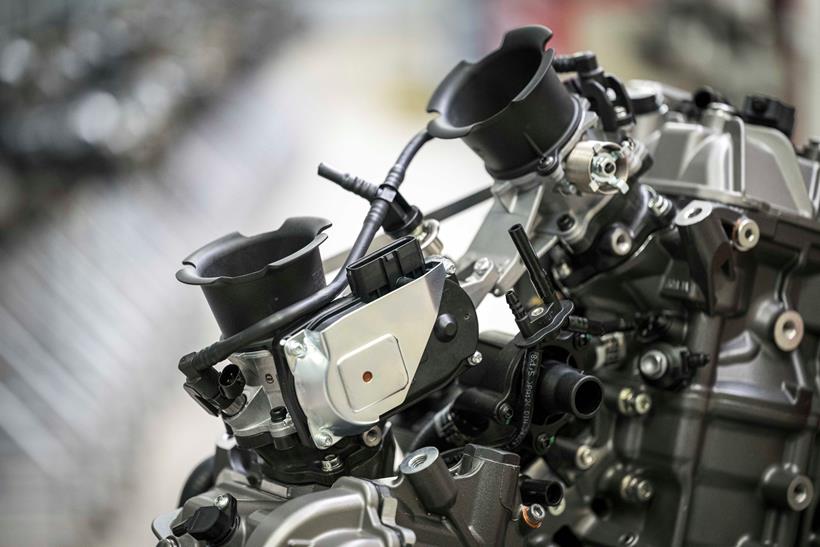
It’s widely expected that the first couple of machines bearing the new motor will be a new Streetfighter V2 and a new Panigale V2, with more of the family to be unveiled in 2025.
According to Ducati, this is because they’re a relatively small operation (there’s only 75 workers in the engine department) and they don’t have the staff volumes to move any quicker.
Going the distance
Longevity is key, which is why the new V2 motor has been blessed with decent service intervals for a sporty motor. It will have a 15,000km (or 9320 mile) oil change schedule, alongside a 30,000km (or 18,641 mile) valve clearance check.

On a diet
The aim was to keep the V2 as small and light as possible. For example, the water pump is positioned on the head of the front cylinder to keep things compact, while little changes such as the intake valves having a hollow stem for the first time, or even the thickness of the water jacket around the cylinder liner keep the weight down.
Ready to roll
Ducati have built a whole new production line for the new V2 motor, which at its peak, will offer the ability to produce 90 complete engines per day. Each engine is assembled by one engineer from start to finish and takes about 110 minutes.
